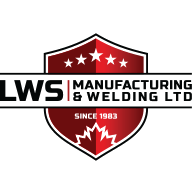What is Aluminum Fabrication?
Aluminum is one of the most popular metals used throughout a variety of industries because, when fabricated the right way, it offers a wide range of benefits. If you would like to learn what aluminum fabrication is and how it can benefit your business, the experts at LWS Manufacturing & Welding would love to help. We offer a range of comprehensive fabrication and welding services, including aluminum fabrication.
Aluminum Fabrication
Aluminum fabrication is the process of cutting, shaping, and extruding aluminum into a finished product. Compared to other types of metal, aluminum is a popular choice for fabrication because it is lightweight, corrosion resistant, strong, non-sparking, and non-magnetic. Aluminum is also malleable, which makes it highly adaptable to shaping and extension.
Advantages of Aluminum Fabrication
As a metal, aluminum offers a range of different advantages that make it a great choice for metal fabrication projects, such as:
- Lightweight—aluminum weighs a third of the weight of stainless steel and offers a higher strength-to-weight ratio.
- Easy to work with—aluminum is soft, corrosion resistant, recyclable, and non-toxic.
- Cost effective—aluminum is an affordable metal, making it ideal for both small scale and heavy industrial applications.
- Non-magnetic—aluminum can be used in electrical applications where system components are sensitive to magnets.
- Customizability—aluminum can be fabricated into a wide range of different shapes and styles with varying finishes.
Aluminum Fabrication Techniques
Similar to other types of metal, aluminum can be fabricated using a variety of different techniques; however, some methods work better than others. Some of the most popular aluminum fabrication techniques include:
- Extrusions—forcing a piece of aluminum through or around a die, causing the aluminum to conform to the die’s shape and size.
- Drawing—pulling the aluminum through a tapered die to stretch it.
- Forming—pressing all or part of the aluminum into the desired end product.
- Castings—pouring liquid aluminum into a mold or die.
- Forging—beating or compressing the aluminum into a shape.
- Machining—sculpting by removing aluminum from the sheet.
- Waterjet cutting—cutting the aluminum using a high-pressure water spray with abrasives.
- MIG and TIG welding—melting a metal thread to bind two pieces of aluminum together.
- Adhesive bonding—using specific adhesives to bond two pieces of aluminum together.
If you would like to learn more about what aluminum fabrication is, or if you are interested in our aluminum fabrication services, please contact LWS Manufacturing & Welding at 604-854-1277 or by filling out a contact form on our website.




